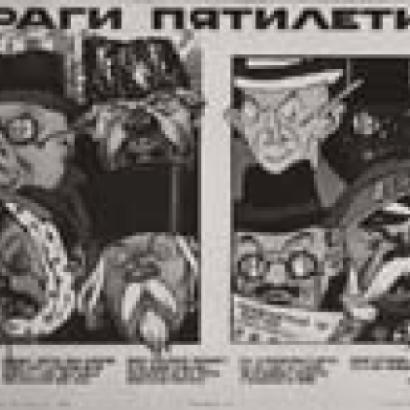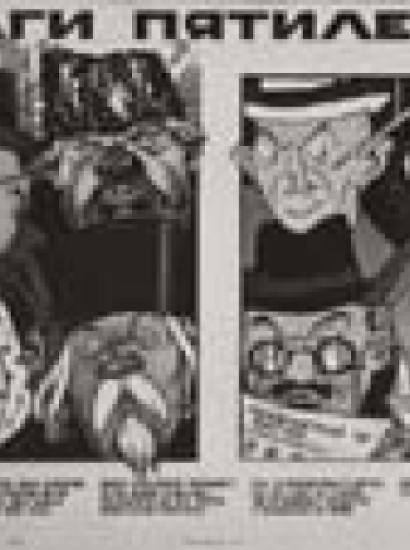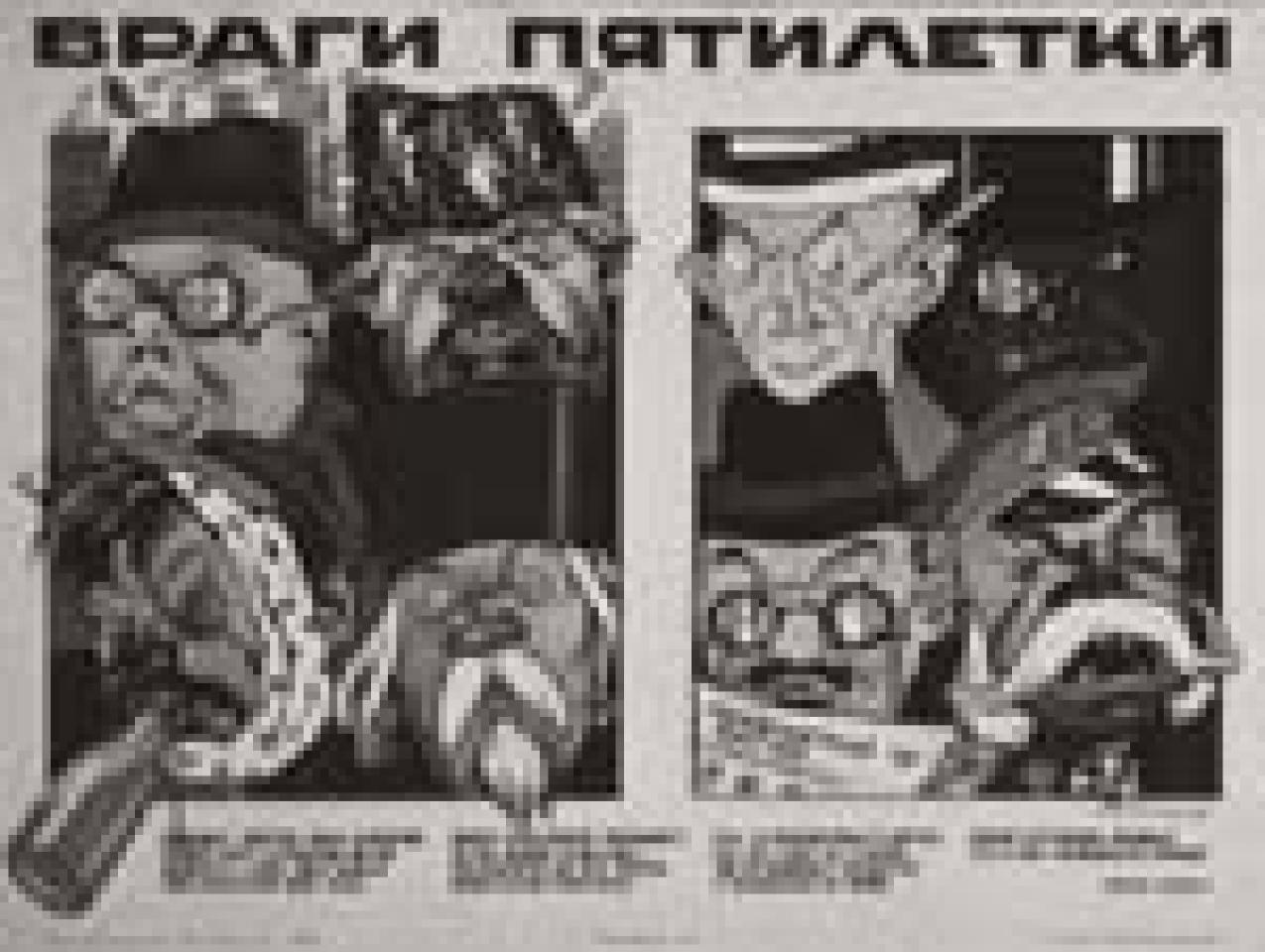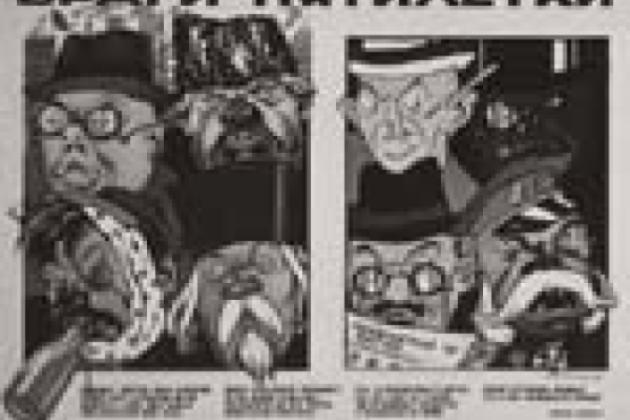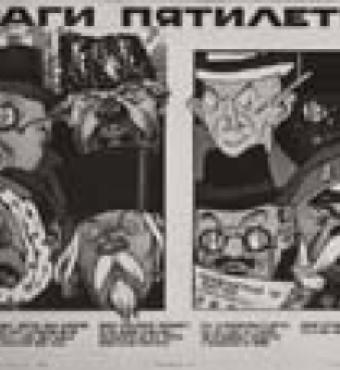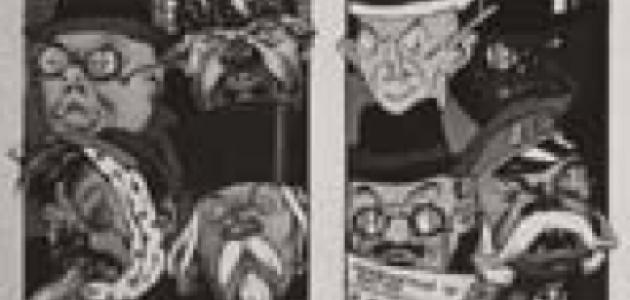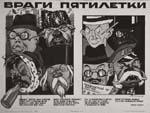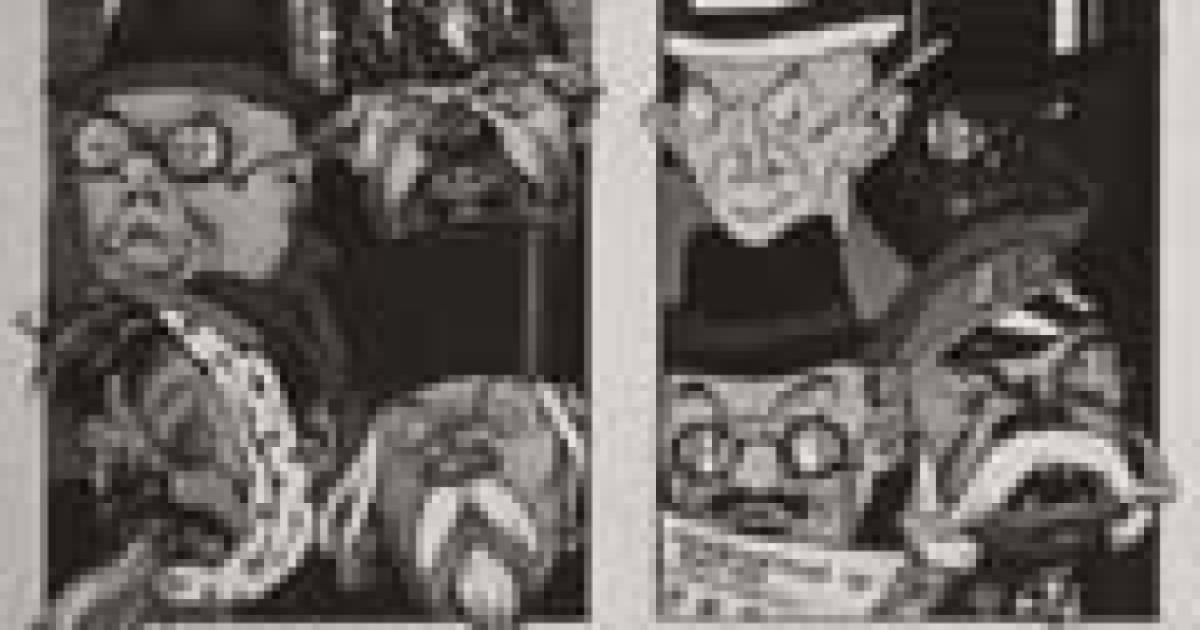- World
- Contemporary
- International Affairs
- US Foreign Policy
- History
The Soviet Union under Joseph Stalin engaged in acts of state terror from 1936 to 1938 so systematic and dramatic that they have earned their own grim place in history, becoming known as the “Great Purges” or the “Great Terror.” How bad were the purges? Hoover fellow Robert Conquest has estimated that the deaths numbered in the millions from late 1936 to early 1939 alone, and his estimates are regarded as authoritative in Russia today. But one strain of historians argues otherwise, claiming that the number of deaths was much, much lower and that the effect of the purges on the leadership and people of the Soviet Union has been overstated. Soviet documents, now in the possession of the Hoover Institution Archives, have begun to shed light on the question.
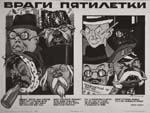 |
Enemies of the Five-Year Plan
Stalin’s reign of terror was not confined to the years of the Great Terror (1936–1938). During the first Five-Year Plan—Stalin’s nationwide campaign to implement forced collectivization and rapid industrialization begun in 1928—various groups were singled out for persecution and blamed for all the country’s economic failures. This poster from 1929 attacks eight groups that were frequently scapegoated (clockwise from top left): landlords, kulaks, journalists, capitalists, White Russians, Mensheviks, priests, and drunkards. (Mensheviks were the moderate wing of the Russian Social Democratic Workers’ Party; they split from Lenin’s Bolshevik wing early in the century.) The poem at the bottom of the poster was written by Demyan Bedny, one of Stalin’s favorite poets. The poem harshly ridicules these members of the “old order,” describing them as “hounds that have not yet been caged.” The group is condemned for “declaring war” on the Five-Year Plan because “they understand that it will bring about their final destruction.” Poster courtesy of the Hoover Institution Archives. |
Acquired as part of a joint microfilming project with the Russian State Archive, documents in what is known as fond 89 provide direct evidence of the extent and nature of Stalin’s terror. The evidence they present is fragmentary—pieces, so to speak, of a puzzle. But the documents irrefutably establish that the terror was widespread, that it was personally directed by Stalin and his Politburo, and that its extent was enormous. Herewith three of the primary findings.
1937: TWO DAYS IN JULY
A few of the many top-secret resolutions on “Anti-Soviet Elements” approved by Stalin and the Politburo show them consigning tens of thousands to execution and slow death. A July 10, 1937, Politburo meeting resolution confirmed “1,881 kulaks* selected to be shot and 4,259 for exile”—an exile from which few would return. A later resolution on the same day selected an additional 14,000 for execution and nearly 31,000 for exile. The next day the Politburo selected yet another 6,900 kulaks for shooting and some 15,700 for exile. Thus we get a figure of some 23,000 shot and 51,000 sent to the gulag—in just two days.
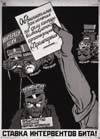 |
A Blow Has Been Struck against the Leadership of the Interventionists
This poster illustrates the trial of the so-called Industrial Party in 1930, one of the first show trials of Stalin’s reign. Placed on trial were various members of the Soviet technical intelligentsia who were falsely accused of plotting a coup d’état with the help of foreign governments, including the British and French. The group was also charged with committing large-scale acts of economic sabotage. The charges were entirely baseless, yet the accused were coerced into confessing at their trials. These show trials served multiple purposes for Stalin. They created a sense that the nation was under perpetual siege from enemies both inside and outside the Soviet borders. This siege mentality was intended to intimidate dissenters, inspire self-sacrifice among the masses, and excuse the hardships and failings of Stalin’s industrialization policies. In this poster, the hand in the foreground holds an indictment against the “counterrevolutionary” Industrial Party. One of the scientists accused of committing sabotage and espionage in the fictitious conspiracy sits in the dock, a puppet controlled by foreign strings. The faces in the background represent the alleged foreign co-conspirators: industrialists, members of the Polish and Romanian military, and French premier Poincaré. Poster courtesy of the Hoover Institution Archives. |
1937: AUTUMN
By the fall of 1937, the operation of the terror was becoming so effective that it was producing administrative problems. In Stalin’s native Georgia, for example, the Communist Party chief (and Stalin’s future secret police chairman), Lavrenti Beria, reported in October that Georgia’s prisons were filled with more than five thousand prisoners still under investigation. This was leading to a number of “irregularities.” Sharing cells, prisoners were able to conspire in refuting the charges brought against them. To remedy such problems, Beria asked for and received the right to establish a Special Troika to expedite cases. This in effect meant expediting executions and condemnations to the gulag.
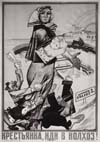 |
Peasant Woman, Join the Collective Farm!
This poster from 1930 is part of the campaign against peasants waged during the collectivization of Soviet agriculture from 1928 to 1931. The destruction of the peasant way of life and the extermination of millions of peasants through arrest, hard labor, and famine were precursors to the broad assault on traditional culture undertaken during the Stalin era. In this poster, drunken kulaks and a priest—embodiments of the “old order” thought to be resistant to change—struggle to drag a young peasant woman away from the collective, which is depicted as a paradise of modern agricultural production and the path to a utopian urban modernity. Poster courtesy of the Hoover Institution Archives. |
1938: JULY
A year later, in 1938, a report to the Central Committee detailed the deaths and prison sentences being meted out. The report covered only a tiny fraction of the territories of the Soviet Union and dealt with one of the last months of the great purges. It nevertheless reports deaths and imprisonments numbering in the thousands:
| Region | Number Shot |
Number Imprisoned |
Total |
|---|---|---|---|
| Moscow City | 112 | ** | 112 |
| Krasnoyarsk krai | 347 | 89 | 436 |
| Ordzhonikidzhovsk | 47 | 76 | 123 |
| Novosibirskaya oblast | 101 | 57 | 158 |
| Stalingrad | 156 | 26 | 182 |
| Chelyabinsk | 382 | 110 | 492 |
| Bashkiriia ASSR | 223 | 47 | 270 |
| North Osetia ASSR | 47 | 8 | 55 |
| Azerbaidzhan SSR | 199 | 19 | 218 |
| Armenia SSR | 100 | 41 | 141 |
| Total | 1,714 | 473 | 2,187 |
| ** No figure provided. | |||
* The term kulaks refers to a segment of the peasant class who were accused of being well-off and exploiting others. In fact, the Bolsheviks applied the term to any peasant who resisted Soviet rule. Attempting to keep possession of one cow was enough to bring the charge. The word literally means “fist,” a reference to their alleged tight-fistedness.








